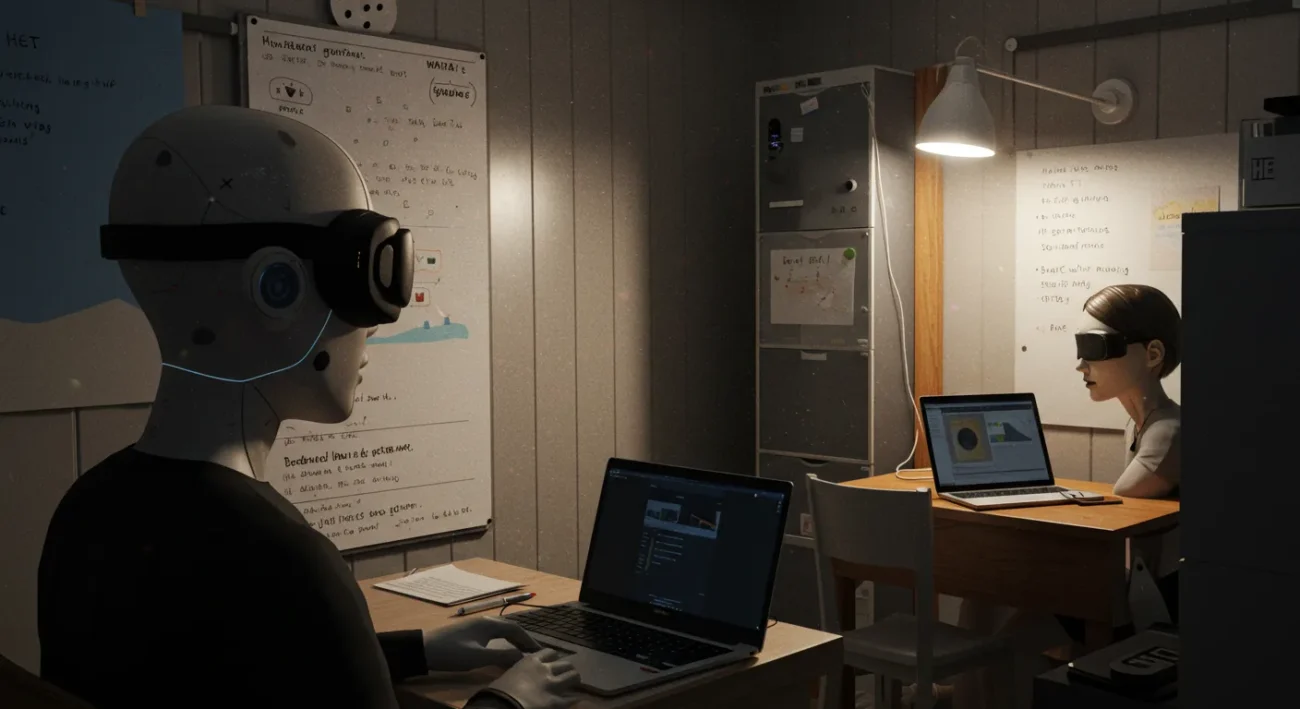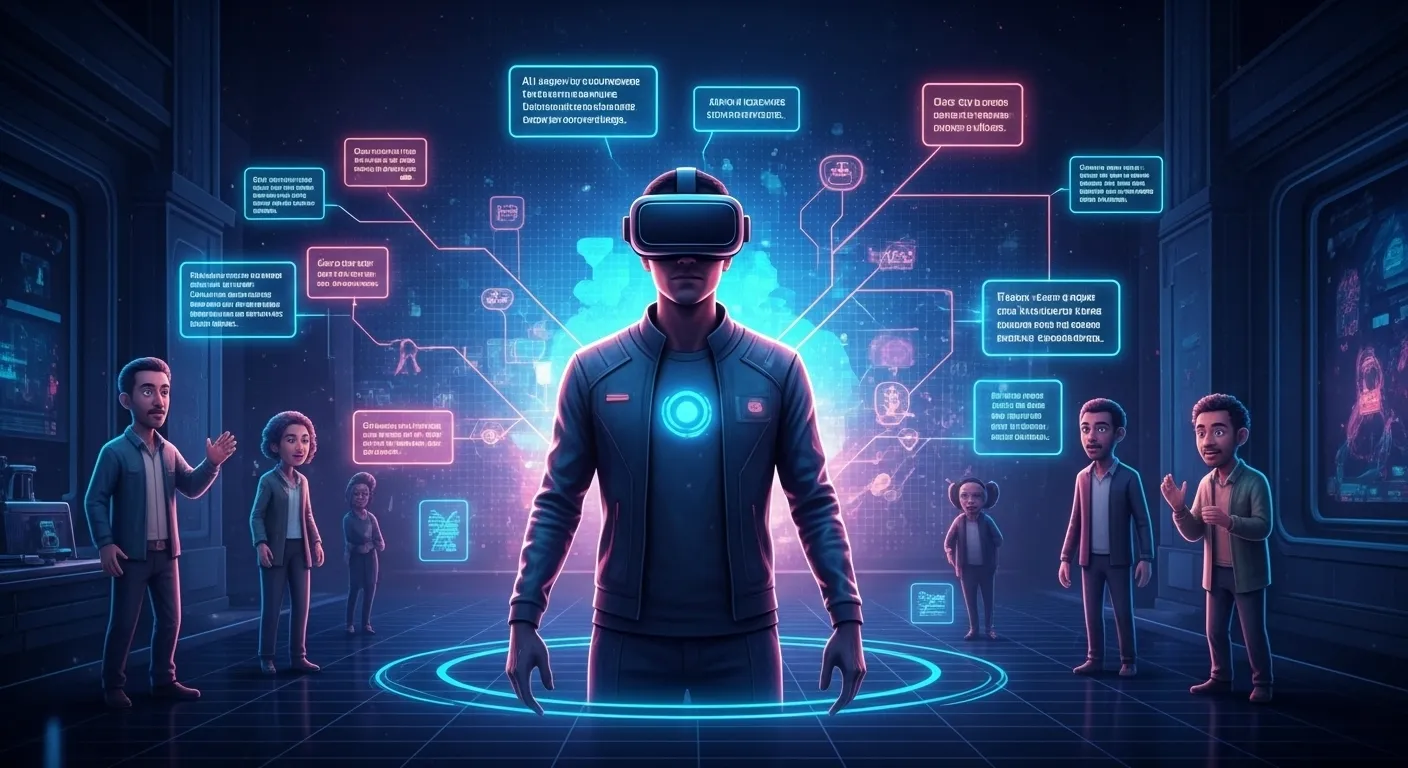Imagine stepping into a game world so real that you forget you’re wearing a headset. Imagine characters that don’t just follow a fixed script but talk, reason, and react uniquely to you. That’s where Virtual Reality (VR) and Artificial Intelligence (AI) are heading. I’ll walk you through how VR and AI are merging to reshape gaming, what challenges lie ahead, and how you (as a gamer, creator, or tech fan) can make sense of it all.
Table: Future Trends in VR + AI for Gaming
| Trend | What It Means | Why It Matters |
|---|---|---|
| Adaptive Narrative & LLMs in VR | Stories that change in real time, shaped by your actions and AI models | You’ll get unique experiences not replaying same plot |
| Multimodal AI Agents (Voice, Gesture, Emotion) | NPCs that perceive your tone, body language, context | Breaks the “robotic NPC” barrier |
| Procedural World Generation + Cloud Rendering | Worlds built on the fly, leveraging edge / cloud servers | Big, diverse environments without huge local hardware |
| Haptic + Sensory Feedback | Gloves, suits, smell, temperature cues | Adds physical “feel” to immersion |
| Ethical & Safety AI Systems | AI detecting harassment, fairness, misuse | Prevents worst-case outcomes as AI gets powerful |
| Cross-Platform & Seamless VR/AR Interplay | Jumping between VR headset, AR glasses, phone | Gaming becomes integrated with everyday devices |
Adaptive Narrative & LLMs in VR
What’s Happening
The most exciting shift is blending Large Language Models (LLMs) with VR environments. A recent academic paper (“How LLMs are Shaping the Future of Virtual Reality”) surveyed 62 studies showing how models like GPT (or successors) are being used to generate dynamic dialogues, plot branches, and real-time adaptive storytelling in virtual worlds.
Instead of fixed dialogue trees or canned quest lines, the game can respond to unexpected player choices or ask you a question and personalize the narrative path.
Why This Stands Out
Many blogs mention “smarter NPCs.” But few mention LLMs + VR together. This is the frontier: it’s what lets games scale personalized experiences without hand-crafting thousands of branches.
Also, the academic research highlights not just the benefits but the limitations latency, memory constraints, and the need for hybrid AI systems (mixing LLM with classical game logic) to keep things responsive.
Potential Use Cases
- Investigation / Detective VR games where you interview suspects and follow clues your questions shape the next scene.
- Open-world VR RPGs where NPCs remember actions you did hours ago and change their attitude.
- Therapeutic / education VR that tailors scenarios (historical, language learning, counseling) based on your input in real time.
Multimodal AI Agents: Beyond Words

What It Is
If you’ve seen NPCs that only talk or move, we’re moving beyond that. The next generation of AI agents in VR will:
- Read your tone or emotional cues.
- Use your gestures, head movement, gaze direction.
- Leverage context (environment, previous actions).
Some blogs mention eye tracking + predictive AI to aim menus or interactions.
Why It Matters
It breaks the “uncanny valley” barrier for behavior. An NPC that notices you’re shaky, or leans in when you whisper, or reacts when you stare too long that feels alive. This matters especially for immersive storytelling, horror, or social VR.
Challenges
- Processing overhead: Interpreting vision, audio, context in real time is expensive.
- Ambiguity / error: Mistaking gestures or tone may lead to weird responses.
- Ethics: The AI interpreting your voice or expressions raises privacy concerns.
Procedural Worlds + Cloud / Edge Rendering
What’s New?
Many blogs talk about procedural generation (randomly built worlds), but they often neglect the role of cloud / edge rendering in enabling larger, more detailed worlds in VR.
Imagine VR worlds that are generated and rendered partly on remote servers or edge nodes, streaming data to your headset. This minimizes the need for super high-end local hardware.
Also, new methods like Gaussian splatting (a 3D capture/render technique) allow photorealistic 3D environments without huge polygon overhead.
So your VR world could be generated on the fly, and scenes streamed just as video games stream textures now.
Why This Is Game Changing
You could explore huge, detailed environments without needing high-end rigs. It opens doors for:
- Massive open-world VR games.
- Shared persistent VR worlds.
- Worlds that evolve continuously (not just fixed maps).
Risks / Barriers
- Latency and bandwidth: streaming VR data must be ultra fast.
- Edge coverage: not everywhere has edge servers.
- Seamless handoff: as you move, transitions between local and remote rendering must be invisible.
Haptic & Sensory Feedback: Feeling the Virtual
What’s Evolving
VR used to be mostly visual + audio. Now we’re seeing more:
- Haptic gloves.
- Suits or vests that give pressure, vibration.
- Temperature, wind, smell modules (experimental).
These are getting more accessible and smaller. Several hardware makers are pushing into consumer haptics.
Why You’ll Want It
Imagine feeling impact when you punch, or a gust of wind in a VR forest. These sensations deepen immersion in a visceral way you don’t just see the world, you feel it.
Ethical & Safety AI Systems
The Big Concern
With great AI + VR power comes great responsibility. As AI agents become more complex and environments more immersive, the risks get bigger: harassment in VR spaces, AI bias in decision-making, data privacy, overuse, psychological effects.
Few blogs mention this deeply. But it’s crucial.
Measures & Research
- AI monitoring systems to detect inappropriate behavior
- Bias auditing on AI agents (e.g. NPCs behaving fairly)
- Rules for avatar identity / transformations
- Opt-outs and safe zones in VR for users
Cross Platform & Seamless VR/AR Interplay
Insight
VR won’t be the only mode of experience. We’ll move fluidly among:
- VR headset
- AR glasses
- Phone / tablet interfaces
- Desktop companion apps
A game might let you start a mission in AR on your glasses, then fully immerse in VR for the climax, then switch back.
Challenges & Limits We Can’t Ignore
Even the best ideas face harsh realities:
- Latency & Performance: AI, voice, vision—all need low-lag execution.
- Hardware constraints: Battery, weight, heat are still problems for wearable VR.
- AI hallucination / errors: LLMs sometimes “make things up.” In games, that could break immersion or cause bugs.
- Ethics & privacy: AI that reads you (voice, emotion) must be handled carefully.
- Monetization & fairness: Will advanced AI worlds be pay-walled, deep DLC.
- Adoption gap: Most gamers still have basic hardware; forward tech must scale down.
FAQs
Q1: Will VR + AI replace traditional gaming?
A: Not entirely. They’ll augment and expand gaming. Some genres will still work better without full immersion (strategy, some 2D indie). But many games will adopt hybrid modes.
Q2: When will this future be real for most people?
A: Over the next 5 to 10 years. We already see early signs (LLM-powered NPCs, cloud AR/VR prototypes). But mass adoption will require hardware, bandwidth, and developer support.
Q3: Is AI-driven NPC storytelling safe? Could it do weird stuff?
A: It’s possible. That’s why hybrid models, guardrails, moderation, and testing are essential. The AI should have limits, oversight, fallback behaviors, and safety checks.
Q4: Do I need top hardware to experience this future?
A: Not necessarily. Many innovations aim to shift load to cloud/edge or compress models to run locally. As tech evolves, even mid-tier rigs will benefit.
Q5: What skills should I learn if I want to work in this space?
A: AI / ML fundamentals, VR engine (Unity, Unreal, mixed reality), human-computer interaction, ethics in tech, and knowledge of networking and cloud systems.
Conclusion
The Future of VR and AI in Gaming is not just about prettier visuals or smarter bots. It’s about worlds that respond, characters that feel real, and narratives that adapt to you. We’re moving from passive play to living, breathing interactive spaces.

